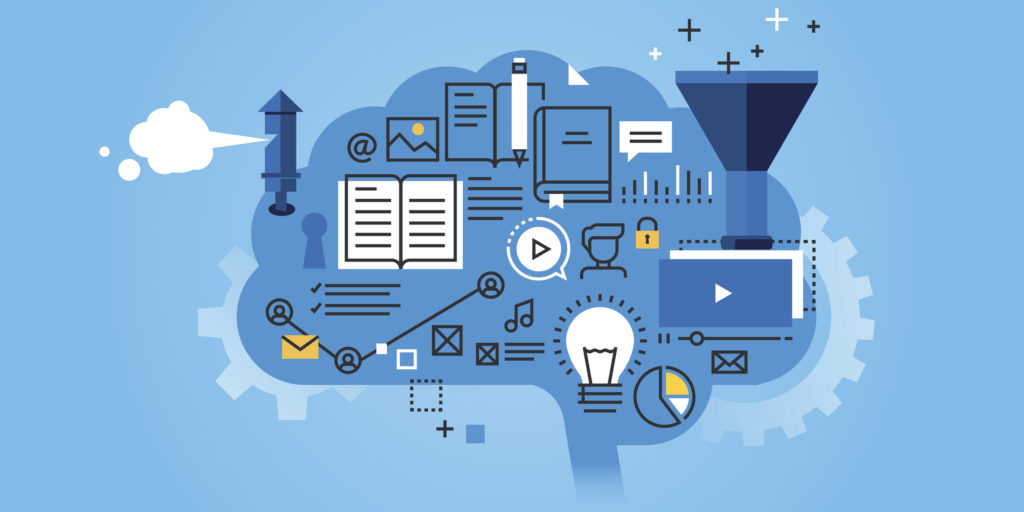
Everyone has their favorite brands that they advocate for, not just because of the quality of the products and services offered but also because they can relate to the brand. It might be because of shared values, like TOMS Shoes’s commitment to give back to society, an inspiring entrepreneur story like AirBnB’s founding, or simply a connection to a brand that has been able to leverage storytelling to connect and appeal to consumer emotions.
While storytelling is already widely used with consumers, B2B marketers often shy away from including it as part of their brand strategy. In this blog we will cover what storytelling is, why B2B marketers should use it and how to best leverage it.
What is Storytelling?
Storytelling in B2B marketing is not just about telling a good story: it’s the art of being able to convey your brand’s story and deliver your message in a way that will appeal to your audience’s emotions and ultimately help you gain their trust.
Storytelling uses a different part of the brain and even changes its chemistry, releasing oxytocin which creates more empathy and a more memorable connection on an emotional or psychological level. While consumer brands tap into emotions such as nostalgia or happiness, B2B marketers want to use stories that will evoke feelings of trust, credibility and reliability.
Intel and Toshiba are prime examples of B2B companies that successfully leveraged storytelling to elevate their brand. In their series of short films “The Beauty Inside,” these tech brands turned technology into something more relatable and human. Microsoft is another B2B giant that went as far as hiring a Chief Storyteller to bring this idea to the forefront of their content marketing strategy. In their “Microsoft Stories” campaign, they were able to gain other businesses’ trust by projecting their excellent company culture and employee engagement.
Why storytelling in B2B marketing?
While a robust content marketing strategy to connect and deliver meaningful information to your customers throughout their journey is key, it’s challenging to compete against an overload of marketing communications and an average attention span of only 8.25 seconds. In fact, according to a study by Track Maven, the amount of content produced by brands increased by 78% while engagement with each piece decreased by 60%.
In a time when companies are fighting for attention, higher quality content over quantity has become increasingly critical. A good storytelling strategy requires some preliminary work as it needs to be consistent and remain genuine across various marketing channels.
Incorporating storytelling elements in to your B2B marketing communications can help you stand out from the crowd and offer a more personal and relatable experience. By appealing to a different part of the brain and tapping into people’s feelings and emotions, you move the conversation from what you are selling them to how it is going to benefit them and address their pain points.
According to research from CEB’s Marketing Leadership Council in partnership with Google, 50% of B2B buyers are more likely to buy if they have an emotional connection to your brand and 68.8% are willing to pay a higher price when they believe in the mission or story of the brand they are partnering with.
These results are not surprising given that B2B buyers are typically making long-term investment purchases that will have a high impact on their business, their brand and their own career.
Storytelling can be a powerful tool to elevate your brand and build the trust B2B buyers need to commit to your brand. In addition to increasing brand loyalty, customers who believe in your brand are more likely to become your brand advocates which is a considerable benefit in a time when people rely on their peers’ feedback to make purchasing decisions.
How to leverage storytelling?
A successful storytelling strategy will deliver valuable, story-driven content while also serving a purpose for your company. If not done properly, this practice can backfire and make customers feel like they are being emotionally manipulated, which could hurt your brand. Nonetheless, the reward can be powerful.
Recipe for a powerful story:
- Be authentic
- Bring value to your audience
- Address your audience’s pain points
- Develop a relatable story
- Evoke genuine emotion
- Inspire trust
Tips to get started:
- Start with your own brand story: How did your company get started? Why did you create your product/service?
- Train your leadership and employees on your brand story
- Create content that incorporates your brand story
- Start testing your story during one-on-one interactions (internally, customer meetings, networking events)
- Assess early response from your audience and adjust if needed
- Test various channels
- Develop or build on new stories
When it comes to storytelling, practice makes perfect! Start small and work your way up to a brand strategy that incorporates storytelling in your content, website and daily customer interactions. You will see quickly just how important B2B storytelling is when connecting to your customers.
There are no comments